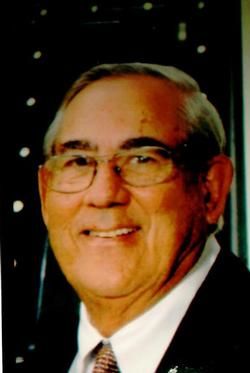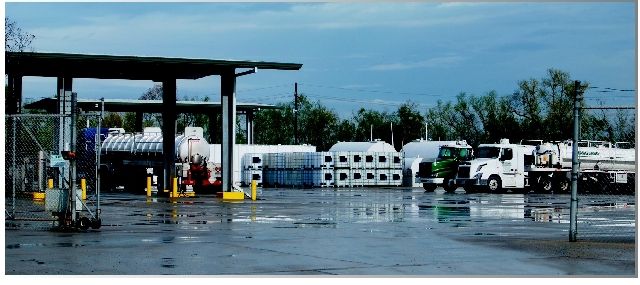
William Marmande Sr.
March 19, 2015
Xavier Keion Richard
March 20, 2015maximum per day allowable. Gawlik said his tanks can only handle 4,000 barrels per day.
“They bring up these numbers like 28,000 barrels — that’s just what the formation [underground] will hold,” said Gawlik. “There’s no possible way in the world I could ever bring that much water in truck-wise or ever get that much water. We don’t have that much production on land down here.”
Gawlik said that if he were to near the 5 tons threshold, he would apply for an air permit before exceeding it.
The concentration of VOCs in the brine reported by Vanguard to the DEQ is also in contention, Subra said.
Subra said that brine collected by other saltwater disposal companies in the area contains “more hydrocarbons than what they’re stating, usually, in the brine.”
Gawlik counters that he has a skimming system that collects the oil continuously in the closed tank.
Johnston said the DEQ does not verify air emission calculations submitted to the agency when considering air permit exemptions and couldn’t until a well like Vanguard’s well were operational.
“Given that Vanguard has garnered a bit of opposition, DEQ may choose to go down there after operations commence and take samples. I mean, that would just be our inspection division,” Johnston said. “But there’s not an express requirement to do that.”
Current court actions After the Louisiana Supreme Court dismissed Terrebonne Parish’s appeal in November 2013, attorneys for the parish requested that the DEQ investigate the discrepancies in Vanguard’s permit applications and “reopen” the process for determining Vanguard’s exemption eligibility.
The DEQ said in a letter to attorneys representing the parish dated December 9, 2014, that after reexamining the data their request for reopening was denied.
The letter also said that DEQ multiplied the amount of water Vanguard told them they would process five times and found that the site would still qualify for the exemption.
“It was that decision that we felt was ripe for taking an appeal on,” said Charles Ellis, attorney for the Lemmon Law Firm, representing the parish, at last week’s parish council meeting. “At that point, that’s when I believe we had a decision from the parish government to not move forward with it in light of [the costs of moving forward with an appeal].”
During the Feb. 11 council meeting, Lucretia McBride, a concerned citizen, brought up the fact that Terrebonne Parish was no longer pursuing any legal action to fight Vanguard Environmental’s injection well. This surprised the parish council, since they were not informed by Claudet.
Christa Duplantis-Prather, parish councilmember for district 5, the district Vanguard Environmental is in, was caught by surprise.
“This is not for just me, I mean I live here, but this is for the public, the people that were not given… the right to know what’s going on,” Prather said in a phone interview after the meeting.
Claudet apologized to the council during the Feb. 11 meeting. He said that it was during the Christmas holidays and that making executive decisions up to $50,000 fall within his powers as parish president.
Claudet said during the Feb. 11 meeting that attorneys estimated pursuing further appeals would cost $35,000 and that he believed the parish would lose, again.
Prather requested attorneys from the Lemmon Law Firm attend last week’s parish council meeting to update the public on the case.
At that meeting, Ellis said that when Claudet decided not to continue, We Can Guard Houma and the Louisiana Environmental Action Network decided to do so on behalf of the parish.
Ellis said that a petition for review of the state DEQ decision has been filed in a Baton Rouge court, and that is where the case currently stands.
THE INJECTION WELL
Vanguard’s injection well ends 4,900 feet below Houma in a sand formation that contains salt water that has more chlorides in it than the water the company plans on pumping into it, Gawlik said.
“You look at the formation that’s down there and you couldn’t have picked a better place,” Gawlik said. “The sand formation below is phenomenal.”
Typically, if properly constructed and operated and the subsurface formation is compatible, “an injection well should not represent an environmental concern,” said Steve Burnham, President of Engineering Associates, an environmental engineering consultant firm.
Burnham said that saltwater wells normally qualify for exemptions from getting an air permit because there is so little oil floating on top of the brine.
The oil must be separated from the brine before it is pumped underground, and to do so the brine sits in tanks and is pumped from the bottom, Burnham said.
But in order for the oil to be recovered, the tank must be filled and drained multiple times until the layer of oil floating on top is thick enough to be recovered, Subra said. This increases the amount of VOCs being released into the atmosphere.
THE DANGER
According to the U.S. Environmental Protection Agency, these wells prevent surface contamination of soil and water. The EPA says that there are approximately 144,000 injection wells in operation in the U.S. pumping 2 billion gallons of brine underground every day.
The state DNR says there are 71 saltwater injection wells currently operating in Terrebonne Parish.
In 2012, ProPublica.org, a non-profit investigative reporting website, examined the regulation of saltwater injection wells and reported that between “late 2007 to late 2010, one well integrity violation was issued for every six deep injection wells examined — more than 17,000 violations nationally.”
Pro Publica reported that “more than 7,000 wells showed signs that their walls were leaking.”
“I don’t operate the way these people think that I operate,” Gawlik said.” …I think they’re trying to get political gain and to make a name for themselves. If it was so bad, why wouldn’t they go attack the rest of the wells in town that are in neighborhoods? Like this Chris Domangue. He has an injection well right behind his office.”
Despite such claims and assurances, some residents say there is no way they will be comfortable.
“I live right there,” said Amanda Gautreaux, a resident of the neighborhood whose son goes to St. Gregory Barbarigo Catholic School. “I don’t want that in my water.”
Back lot at Vanguard in Houma where vacuum trucks used to harvest oilfield wastewater are kept near tanks used to reclaim oil from the brine.










